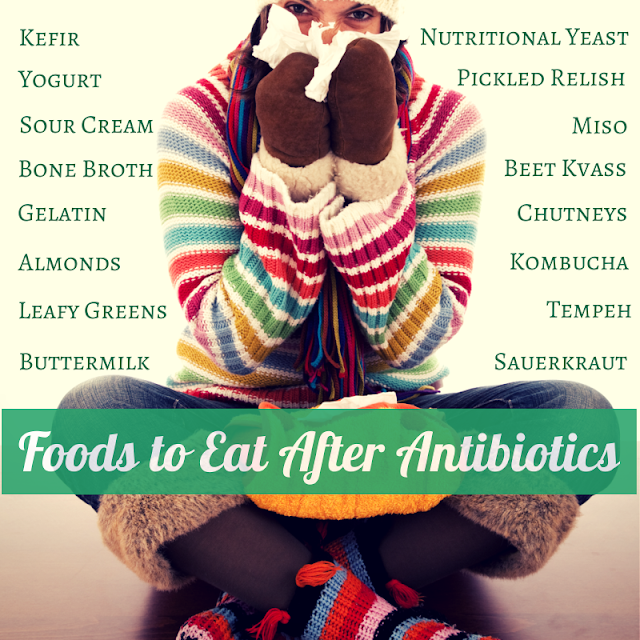1. Eliminate sugar/simple carbs from diet
There are more complex ways I could describe the science behind altering diet to repopulate good bacteria, but the simplified general premise is that bad bacteria thrive on sugar and simple carbohydrates. Eliminate sugar and simple carbs, and the result is an environment in which bad bacteria can’t thrive. Once your gut seems to be back to normal, only then should you consider slowly incorporating sugar and simple carbs again. My caution at the start of this post bears repeating: post-antibiotic constipation should not be treated with Miralax and can be healed instead using simple dietary changes. Update (1-22-13): Confessions of a Dr. Mom, a pediatrician-written blog, delved further into causes of and potential side effects from constipation.
Studies are being done to establish links in long-term diet and the type of bacteria present in the gut. While our traditional Western diet is not yet directly linked to disease, I have no doubt it will be. Based on my own anecdotal evidence of when I’m healthiest, I hypothesize that eventually there will be an evidence basis for eating a diet high in leafy greens, low in simple carbohydrates. I also believe the ideal diet includes the “dreaded” saturated fats (e.g. lard, bacon, avocado, coconut oil), which we are beginning to recognize contain important monounsaturated omega 6 essential fatty acids that are necessary for normal brain function.
2. Add probiotic supplements
Probiotics are beneficial bacteria that aid digestion and immune system function; as stated above, they are wiped out during antibiotics and can be added back afterward. We have been told in the past to use probiotics while using antibiotics; however, only yeast-based probiotics should be taken while on antibiotics because antibiotics likely also kill the probiotic bacteria. Therefore, I start bacteria-based probiotics after antibiotics are finished.
Studies on pediatric populations using probiotics medicinally are demonstrating positive preliminary results, so it can be concluded that use of probiotics for gastrointestinal trouble and post-antibiotic health has potential benefit. There is even some evidence that if I had given my children probiotics prophylactically, I could have prevented the upper respiratory tract infection from happening at all!
Considerable difference exists in the quality of probiotics offered, so consumers should use their best judgment when selecting a product. There’s probably nothing wrong with Culturelle, but I prefer using a natural product called Buddy Bear probiotic by a company called Renew Life that I got at Whole Foods. I like it because instead of dissolving a powder in water, it’s in chewable pill form like a vitamin, and the kids say it tastes good. Bacteria included are Lactobacillus acidophilus, Bifidobacterium bifidum, and B. infantis.
Probiotic beverages are also a great way to get extra good bacteria in your children’s gut. They’ve even shown to increase the immunity of healthy individuals. Probiotic drinks, such as fermented milk, typically taste great and contain the added benefits of protein and calcium, meaning you can replace the constipation-inducing cow’s milk with milk kefir or other probiotic beverage while your child is recovering from constipation. (Note: See #4 below for more discussion on fermented foods).
3. Add prebiotics (i.e. high-fiber foods)
I didn’t realize adding fiber would be controversial, but there are folks who will say fiber is not your friend because it’s tough on your compromised gut. I, however, stick with the science base that report prebiotic-containing high non-soluble fiber foods, like whole grains and bananas, help the probiotics proliferate the gut.
4. Add fermented foods
While omitting sugar, I also recommend eating fermented foods when possible, even if they contain a minor amount of sugar. My pre-kindergartner loves just about every food, including an unnatural zeal for anchovies, so we have no trouble getting her to eat foods like fish sauce, soy sauce, and (locally-produced* or homemade) sauerkraut. My toddler, however, is less than thrilled at those prospects, so I have to be more creative to increase her fermented foods. There is a list of fermented foods near the end of this lengthy post. My kid-friendly favorites are local* pickles, aged Cheddar cheese, yogurt kefir, homemade Greek yogurt, and kombucha. I’m thinking of making our first water kefir too. Have any of you made it before?
*I say local for these because if you purchase mass-produced products, they will not contain much in the way of positive bacteria achieved through fermentation.
5. Add vitamins
Rigorous peer-reviewed science tells us the jury is still out on whether herbal supplements like echinacea and vitamins like vitamin C improve health before, during, or after an illness. Other vitamins like the B group and zinc are known to have a correlation with immunity, so multivitamins are a good idea in general and particularly after antibiotics.
I took an ethnobotany course as an undergrad called “Herbal & Medicinal Plants,” and I learned that like garlic, lemon has been used for centuries for wellness purposes. I love these books, The Encyclopedia of Natural Medicine and The Encyclopedia of Healing Foods, and I keep them on hand to consult occasionally for homeopathic use; the author reports several health benefits of lemon.
I agree with {never}homemaker that even when disregarding potential health benefits, a glass of fresh-squeezed citrus juice can really improve spirits, even if it’s not proven scientifically to help immunity. Apparently lemon is the most documented at providing health benefits; it aids liver function as well by quickening digestion in the stomach. However, lemon juice is a mild diuretic so should be combined with lots of water. My favorite citrus juice is red grapefruit–especially when in a grown-up cocktail–and the girls like orange and clementine juice. (p.s. I learned recently via someone close to me that you shouldn’t drink grapefruit juice if you’re on certain drugs because it alters their effect. Really, it’s a thing! Weird).
6. Add chicken soup
Chicken soup is already known to have anti-inflammatory properties that help you recover more quickly from colds and the flu. I think it could also offer the same immune system benefits as bone broth, which has known digestive benefits. Check back tomorrow, when I’m going to post my grandmother’s simple chicken soup recipe.
Update (10-14-13): The Healthy Home Economist wrote about a new procedure called bacteriotherapy (aka. fecal transplantation) to treat “severely compromised gut function.”
Healing skin conditions after antibiotics:
1. Coconut oil
Coconut oil is naturally anti-fungal due to its lauric acid (fun fact: this is the same acid that contributes to breast milk’s anti-fungal property) and thus is a natural choice to make the scalp an inhospitable environment for post-antibiotic fungal infection. [For that matter, if you have an infant, breast milk is a great natural treatment for bacterial and fungal infections such as cradle cap, conjunctivitis, and clogged tear ducts.] I rub a small amount of coconut oil between my fingers until it melts and then apply it to the scalp. I leave it in overnight and then wash hair in the morning. Instructions for removing the oil are in #2 below. Note that it might take multiple washes to remove the oil, but since it’s winter now, I just put a hat on their heads while we’re in public anyway, and no one notices the slight greasiness.
Note for health professionals: I find it particularly important to heal my kids’ skin post-antibiotics and keep it from drying out and cracking because damaged skin is a means through which hospital-acquired MRSA (methicillin resistant Staph. aureus) can enter the body. I am routinely in hospitals for birth work, and although I try to keep possible contamination down by changing clothes and shoes and washing hands prior to coming home, I recognize the bacteria can still potentially be transmitted. I rub coconut oil on their skin after baths; they love the massage, and we all love the smell. Win win!
2. Baking soda
I’ve discussed using baking soda as a shampoo before (see our little apartment’s better article here, or click image above), and I think it’s a great washing agent for after applying coconut oil. Some folks say anecdotally it can also help remove stubborn sebum still clinging to hair after combing. I mix a teaspoon in a small cup of warm water (add #3 too, see below) and pour over the scalp.
3. Tea tree oil
Tea tree oil has antifungal properties that make it a good natural remedy for cradle cap. Once coconut oil has been applied and left for a few hours or overnight to remove sebum, tea tree oil can then be applied (a few drops in the warm water/baking soda mixture, then pour over scalp and massage; or get a shampoo with 5% tea tree oil) to reduce risk of cradle cap making a reappearance.



0 Comments